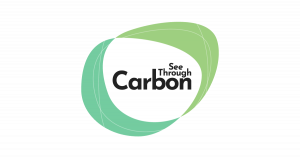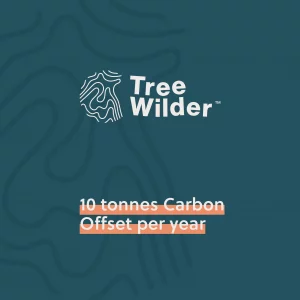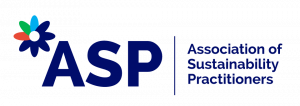Sustainability & my carbon footprint
Sustainability and sustainable business mean different things to different people…
Doing business sustainably, but also having a business that is sustainable and viable.
One definition of sustainability is “doing business without negatively impacting the environment, community, or society as a whole.”
[I go into more detail about the definition of and differences between Ethical Marketing and Sustainable or Green Marketing in this Q&A with Hey Me]
That’s why I’ve agreed to be part of the movement to use marketing as a force for good, emphatically committing to the #sustainablemarketing Manifesto – a ‘Hippocratic Oath’ for marketers. We’re all in this together. And it’s together that we can drive significant change. I’ve completed The 100 points Sustainable Marketer Challenge – have you?
Another definition of sustainability is “the ability to maintain or support a process continuously over time.”
As an Ethical Freelancer I use ethical best practice, but I’m also making my business more sustainable and working with others to make their business more sustainable too.
Sustainability, my commitment to it & my business
Basically, this covers:
- My carbon footprint, including my website’s carbon emissions, & its reduction / offsetting
- The platforms I use & work with / work on
- How my business impacts others & the planet (otherwise known as ‘The 3Ps’: people, planet & profits, or “triple bottom line”)
- The affect it has on my own – as well as my colleagues’ & clients’ – health & well-being too
My website’s carbon footprint & emissions
I’ve taken positive steps and made my website more sustainable and faster to load. Removing large photos and images, and reducing the file size of logos, means that the carbon results for my website are pretty decent. I achieved an A grade (less than 0.185g).
First visit (i.e. not cached):
CO2 – 0.113g SIZE – 365.24 KB
Return visit:
CO2 – 0.083g SIZE – 267.12 KB
“Overall this web page has been graded A when it comes to its carbon footprint”
“This website is hosted using renewable energy or carbon offsets*”
*My website is hosted with a provider who provide green web hosting by default.
Given 900 monthly visits to my website, and a 50-50 split between new and returning visitors, its carbon footprint is 88.3g CO2 per month. This is equivalent to:
- Driving 0.15 miles in a Tesla Model S [less than a quarter of a mile]
- Watching 1 hour of Netflix in HD
1 tree is needed to offset this CO2 in a year. Trees have been planted off the back of my involvement in various carbon reduction events and initiatives. I subscribe to Tree Wilder, and also plant elephant grass through my subscription to Carbon Trap. As well as that, Giles Metcalfe Digital is supporting non-profit 9Trees CIC as part of their Champion Programme.

The Sustainable Web Manifesto
I’ve signed the Sustainable Web Manifesto. Will you sign it too?
If the Internet was a country, it would be the 4th largest polluter
Digital Waste
I’ve made positive changes to reduce my digital waste, and my impact through device use as part of my work and lifestyle. I don’t upgrade my phone every two years anymore. I am keeping my devices like my smartphone and laptops for as long as possible, extending their lifespan. Basically, charging them and using them in an energy efficient and optimal way that also minimises CO2 pollution through device use and power consumption.
Reducing atmospheric carbon & supporting bio-diversity
I am a Champion Trapper, and Proud Member of Carbon Trap, fully committed to reducing atmospheric carbon and also attracting and protecting bio-diversity wildlife species through elephant grass and wildflower planting.
My membership captures and stores carbon from the atmosphere through the planting of elephant grass here in the UK with the co-operation of landowners across the country. Elephant Grass reduces harmful greenhouse gases and slows the effects of climate change. This process also improves soil health, as well as supports the rural economy.
Perennial elephant grass (Miscanthus x Giganteus)
Carbon Trap practices regenerative agriculture and plant perennial elephant grass. Lasting for well over 20 years, the elephant grass captures carbon from the atmosphere and locks it away in the cane and the soil.
The cane is harvested yearly and, subsequently use it to supply material for sustainable projects. In industry sectors such as construction and packaging. The cane is 48% carbon (4.8 tonnes to the hectare @ 10 tonne yield) and used for energy for carbon neutral solutions or locked up in other products, particularly construction materials, animal bedding, textiles, and plastics alternatives.
Alongside the biodiversity elephant grass provides, Carbon Trap also plant wildflower areas within the crop for the bees, butterflies and birds that are vitally important to our ecosystems.
Carbon sequestration
Carbon sequestration is the natural process for the long-term removal or capture of Carbon Dioxide (CO2) from the atmosphere. During photosynthesis the plant absorbs CO2, sucking it down through the plant into the soil. Consequently, it remains locked up, preventing the build-up of greenhouse gasses in the earth’s atmosphere. That mitigates or reverses global warming.
Newly planted trees take more than 20 years on average before they even start becoming carbon neutral. When they reach maturity, because trees get cut down for timber, burnt in forest fires or left to rot.
Elephant grass traps carbon in the cane, soil and surrounding root systems by year two. Then, it contributes quickly to positive carbon capture and consequently impacts climate change for the better.
The soil sequesters carbon, on average, at 1 tonne per hectare, which is basically the size of an international football pitch, per annum.
See the Carbon Trap FAQs for more information.
Tree Wilder
I also subscribe to Tree Wilder, who:
- “Carefully select and shape forest projects to achieve meaningful, lasting outcomes for biodiversity”
- “Support wetland restoration projects achieving enormous benefits to nature and substantial water quality impacts” and
- “Fund exceptional renewable energy projects to break the fossil fuel addiction”
I am a TwoWilder subscriber, which saves up to 10 tonnes of CO2 per year (the average offset needed by one person). This helps protect the planet by:
- Protecting and restoring inspirational, wild landscapes for rare and endangered species
- Reducing greenhouse gas emissions and supporting renewable energy projects
See Through Carbon
See Through Carbon is an accurate, free, open-source, transparent carbon auditing standard. Presently, there are seven pilots running, including for SMEs (Pilot 1), and Live Music (Pilot 2).

The Association of Sustainability Practitioners
The Association of Sustainability Practitioners (ASP) promotes learning that transforms behaviour from unsustainable to sustainable practices. An international community of sustainability practitioners with a wide diversity of skills and practices, learning and acting together to create truly sustainable futures.
I am a member of the ASP. I’m keen to learn more from other practitioners and to share ideas about how to advance sustainable practices.
Carbon Literacy
I’ve successfully completed my Carbon Literacy training and have been certified as Carbon Literate by the Carbon Literacy Project. I will also be helping to deliver Carbon Literacy workshops as a Carbon Literacy Facilitator (CLF).

Improve sustainability & your eco credentials at your business too
Get a Website Sustainability Audit
If you want to take action to improve sustainability and your eco credentials at your business too, you can’t ignore your website.
Reduce the carbon emissions from a website by reducing the amount of electricity used to load, send, and view a web page. Then, ensure that the resulting electricity required to do it is from clean, renewable resources.
The carbon footprint of a website has been “a thing” since around 2018, yet it’s still not that well-known.
Luckily, there are some simple steps you can take to make your website leaner, cleaner and greener.
A guided Website Sustainability Audit Session is only £99 (£75 for Registered Charities and CICs), and you’ll see how your website rates via different tools. Run a full audit on your entire website and discover areas for improvement.
Book it at – https://calendly.com/giles-metcalfe-digital/website-sustainability-audit
Small99 Action Box Workshop
The Small99 Action Box Workshop is a simple, high-speed, fun, in-person or online workshop. It’s for any small business or organisation looking for a Carbon Reduction Plan.





